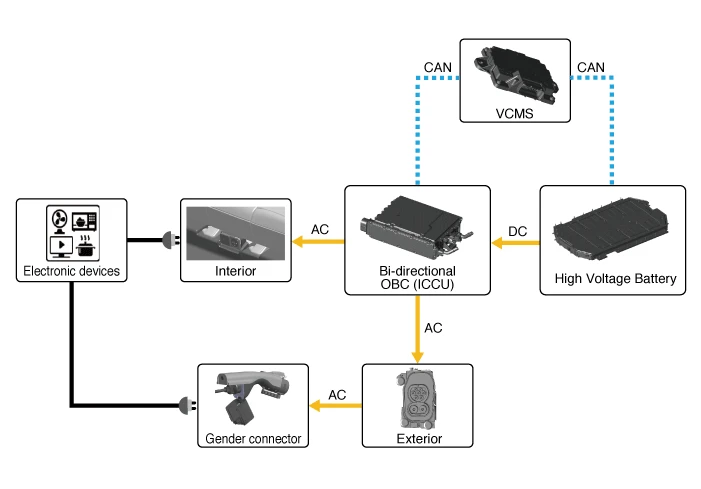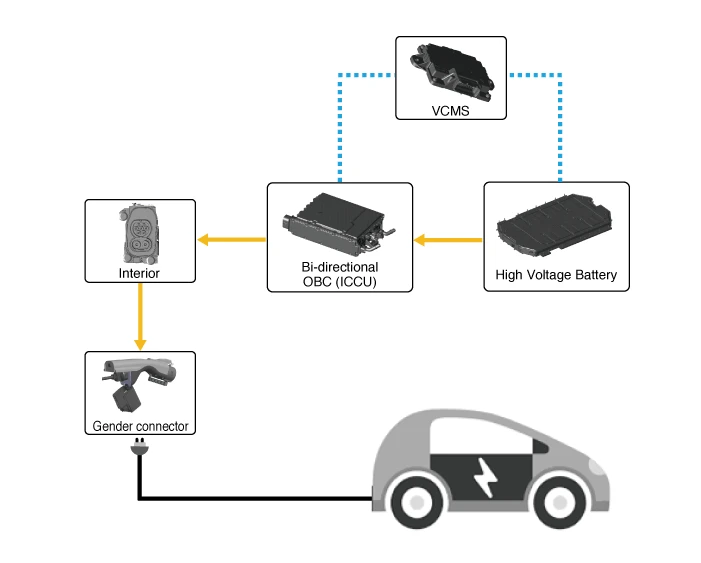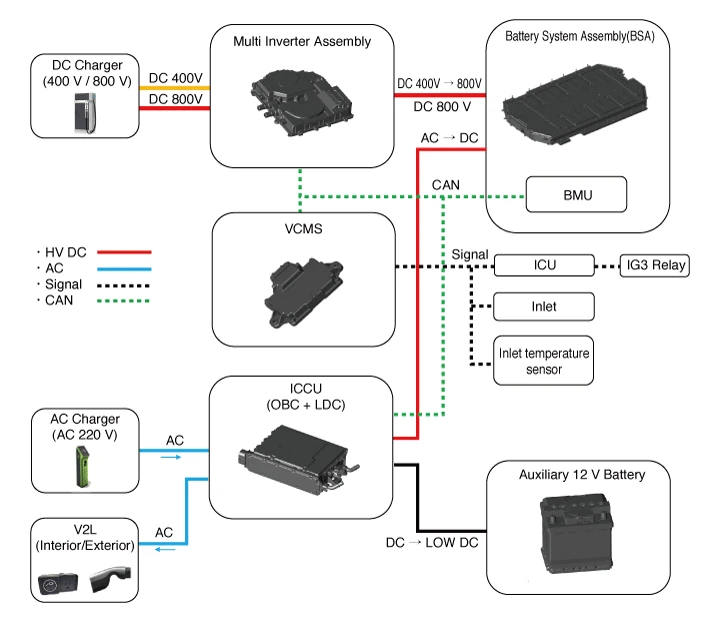Description
High Voltage Charging System Description
• The high voltage charging system consists of the Integrated Charge Control Unit (ICCU), Vehicle Charge Management System (VCMS), multi-inverter assembly, combo charge inlet assembly and electric charge door assembly.
• When charging, the vehicle cannot be driven for safety, and quick charging and normal charging cannot be performed at the same time.
Function
• Normal Charging : The AC power (220 V) of normal charger is converted to DC power through the Integrated Charge Control Unit (ICCU) to charge the high voltage battery.
• Multi-Input Quick Charging : It charges the high voltage battery with the DC power of the quick charger.- The multi-inverter assembly allows charging regardless of the quick charger type (400 V / 800 V). (No additional converter required)- When charging with a 400 V charger, the high voltage battery is charged after boosting the voltage to 800 V using a multi-inverter.
• V2L (Vehicle to Load) : It provides general electric power (110 V / 220 V) inside and outside the vehicle through the bidirectional OBC.1. How to use- Outdoor V2L : Available after connecting the V2L gender connector to the combo charger inlet.- Indoor V2L : Available in EV Ready or utility mode2. System Configuration Diagram

• V2V (Vehicle-to-Vehicle) : It is possible to charge between vehicles by using a two-way OBC.1. How to use- It can be charged by connecting the charging cable (ICCB) to V2L gender after connecting the V2L gender to the combo charger Inlet.

• Plug and Charge (PnC) : Charging can be done immediately without additional authentication / payment process by using VCMS.
Charging System Flow Diagram
